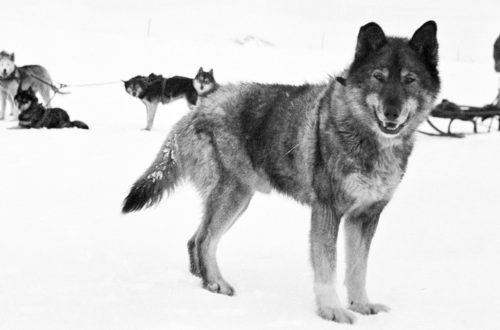
The most popular myths about dogs
10 dangerous misconceptions about dogs that can negatively affect their maintenance and upbringing.
Dogs have not only become our closest friends and companions, for many they are the only close creatures in the world. It’s not good, it’s not bad, it just happens.
Accustomed to humans in ancient times, they have learned to understand our language and gestures. They, at times, understand what we need before we do, anticipate our desires. You can talk about everything with them, they will not reveal the most secret secrets to anyone.
The dog is a friend and companion with the intelligence of a 5-year-old child. It depends entirely on us, so let’s be more careful and responsible. To begin with, let’s debunk the myths, believing in which you can harm your devoted friend.
- Myth 1. The dog also loves the New Year!
Not! This is a holiday for you and me, but not for the pet! It is not true that he also likes to walk on New Year’s Eve and enjoys the general holiday.
The dog does not like the New Year. She is afraid of him!
Loud fireworks, sharp claps of firecrackers, people screaming – all this is insanely scary for a dog. In horror, she breaks off the leash (if they went out with her on a leash) and runs wherever her eyes look. Well, if they find it right away and take it home. And some wander then for several weeks, and do not always come back.
Therefore, please do not play with fate – do not go outside with your dog on New Year’s Eve. In the evening, before 20.00, they went out with a dog on a leash, quickly did all the work – and went home! At home, the dog should have a quiet secluded place in which she will wait out the end of the holiday.
- Myth 2. If a dog wags his tail, he is happy!
Not always. With the help of the tail, the dog shows his mood, state and intention. The tail can tell a lot about the state of the dog at the moment. It is joy, and excitement, and fear, and anxiety. The main thing to understand about tail wagging is the dog’s interaction with the outside world. Seeing you, she not only wags her tail from side to side, but her pelvis moves in the same direction – this is the unconditional joy of meeting you.
But if the dog has lowered its tail and wags it slightly between its legs, it means that it is frightened. If the dog is excited, he holds his tail high and wags it vigorously.

- Myth 3. Dry nose is a sign of illness!
It has long been believed that a healthy dog’s nose should be wet and cold. And if it is dry, then this is probably a sign of illness. In fact, a dry nose can be for many reasons!
First, in a dream. While the dog is sleeping, he does not lick his lips, so he wakes up with a dry nose.
Secondly, if you run or play with your dog a lot, then from such activities it may become dehydrated, which will also lead to dry nose.
Thirdly, weather conditions contribute to the drying of the nose: sun, wind or cold. As well as lying near the battery.
Fourth, dryness of the nose appears in older dogs.
- Myth 4. It is useful for a dog to give birth once.
A common misconception imposed by unscrupulous veterinarians and breeders. In fact, pregnancy and childbirth do not add health to the dog, this is the strongest stress for her.
If your dog is not of breeding value, it should be spayed.
Sterilization at a young age reduces the risk of breast and uterine cancer. Did you know that the number of animals with cancer – both dogs and cats – has increased several times in recent years? And the treatment of such an animal is both expensive and futile.
The dog will live longer and more comfortably if it is spayed. Believe me, this will not affect her cheerful spirit and cheerful character!
- Myth 5. There are “fighting” dogs – and they are very angry!
There are two myths here. First: the concept of “fighting dogs” is incorrect, such dogs do not exist. There are breeds that were once used for dog fighting. But dog fights in our country are prohibited by law, and many other countries have taken the path of developing a humane society.
The second myth is that representatives of these breeds are bloodthirsty. But they are dogs like any other. How a pet will be formed depends on the upbringing, care and behavior of the owner. We know a lot of examples where dogs belonging to the so-called “fighting” breeds behave like soft felt boots and allow small children to ride like a horse.

- Myth 6. Dogs are color blind.
Scientists have proven that dogs can distinguish all colors except red and green. But the gray color seems to them in a large number of shades: almost fifty! The eyesight of dogs is much sharper than that of humans. They see our world with you in increased sharpness.
Myth 7. Dogs benefit from bones.
Neither chicken, nor pork, nor beef bones can be food for your dog. The bone is not fully digested and can damage the stomach or esophagus. But you can give cartilage: they are easily chewed and digested. The dog’s diet should consist of a balanced diet, and as a treat and entertainment, you can give the pet a treat from pet stores.
Myth 8. If a dog eats grass, it is treated.
Not certainly in that way. Dogs sometimes eat juicy greens to clear their stomachs. But sometimes they are happy to eat grass, berries from the bushes and a green tail from a carrot, because it just tastes good to them. But many veterinarians warn that a pet should not be allowed to get carried away with grass. Sometimes it is not absorbed and harms the digestive tract.
Myth 9. Food from the owner’s table is the most delicious and healthy.
A dog’s digestive tract works differently. What is good for a person is not very suitable for her.
Some owners prefer to feed their dogs natural food – porridge with meat. But then vegetables should also be added to the diet so that the food is balanced.
It is better not to experiment on the health of your pet, but to feed it with ready-made feeds, where the amount of proteins, fats, carbohydrates and minerals is normal.
10. If a dog has a dark sky, it is angry.
More than half of dogs have dark pigment on the palate. It depends on the color and heredity. And it has nothing to do with character, aggressiveness or anger!
And in general, there is no concept – an angry dog. There is a dog that is scared, stressed, emotional, nervous, traumatized, but not angry. What kind of character she has and what her habits are, depends only on the people who surround her.





